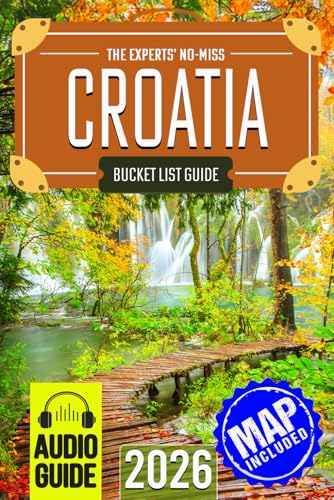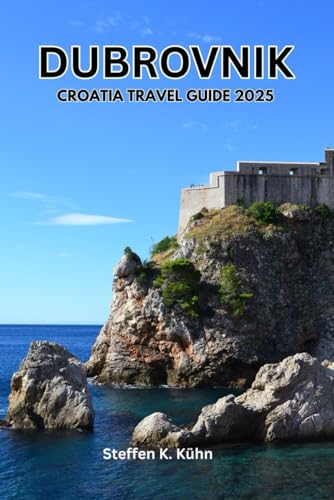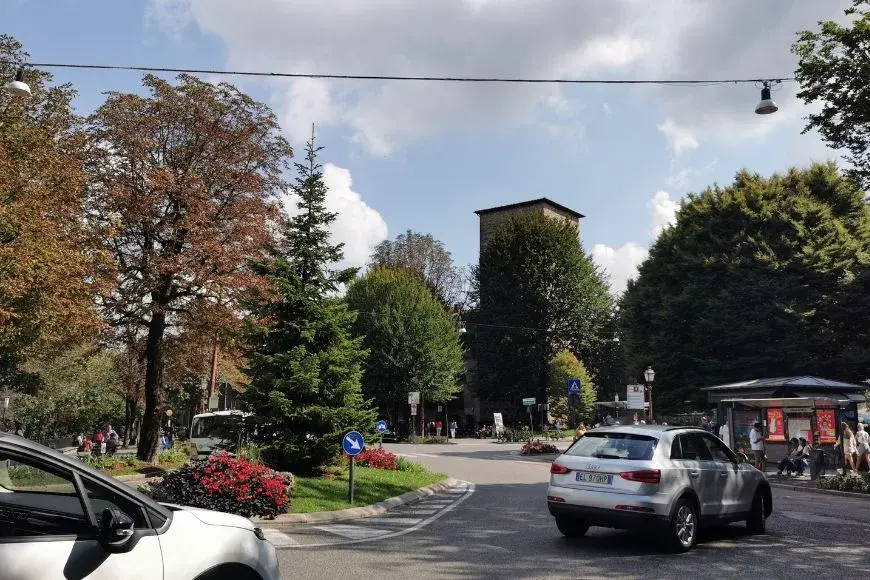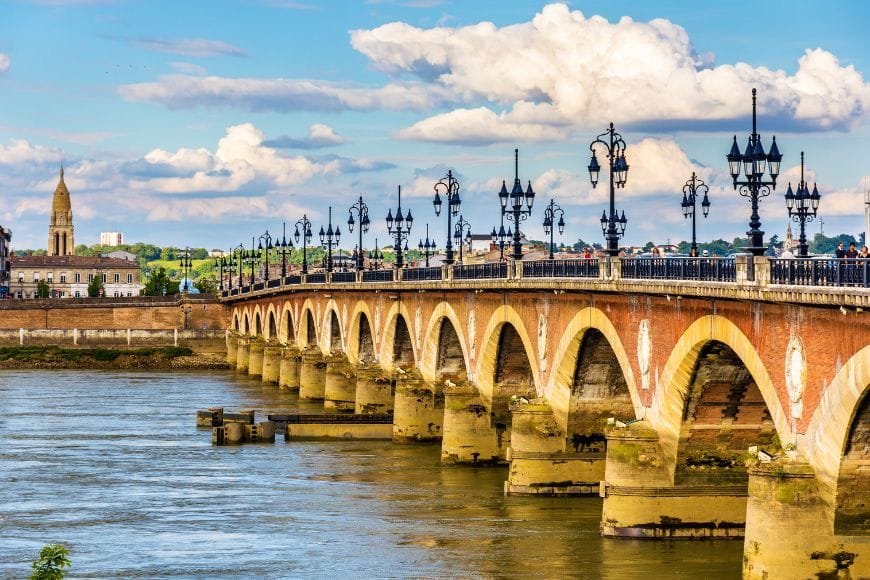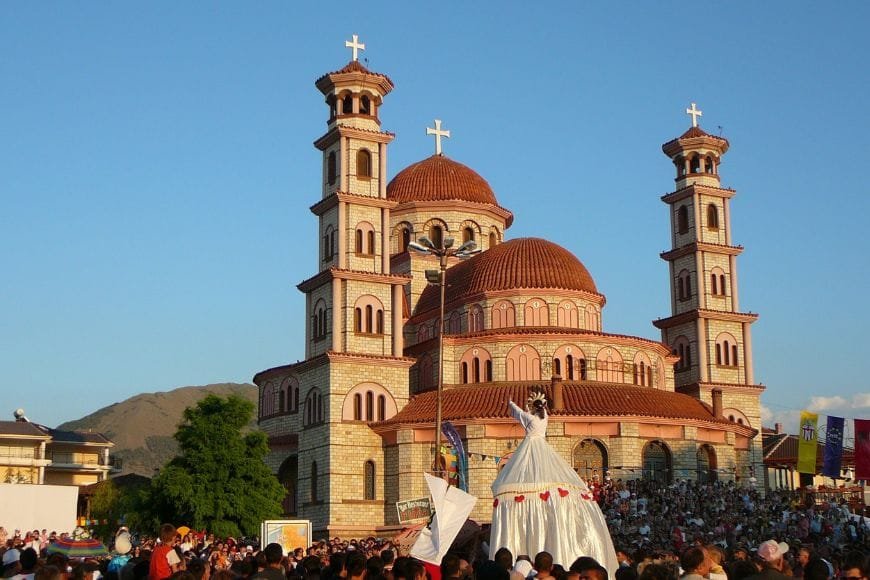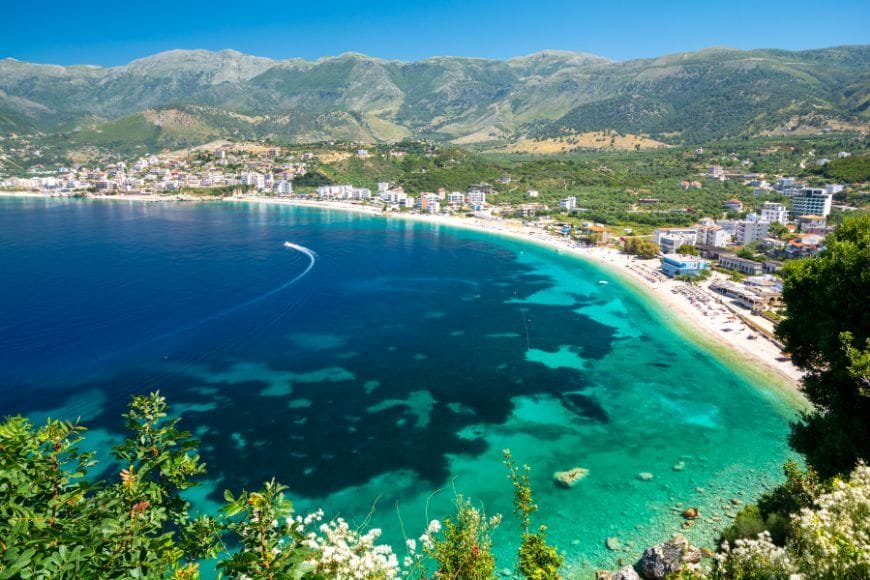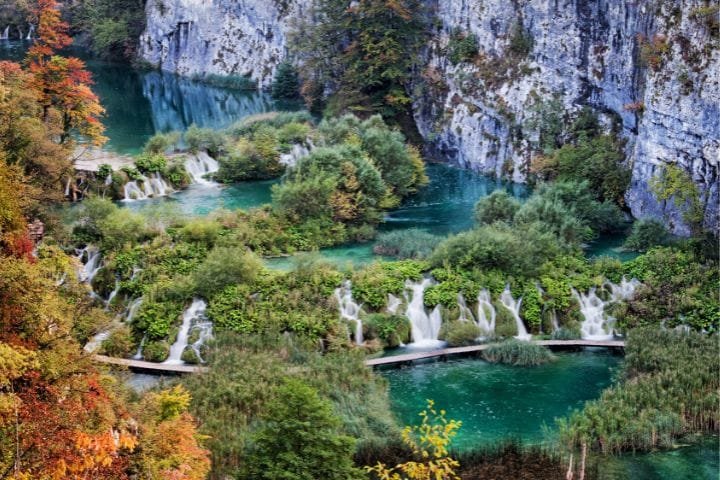Driving the Dalmatian Coast: A Scenic Road Trip Guide (2025)

by Tim | Last Updated December 4, 2025
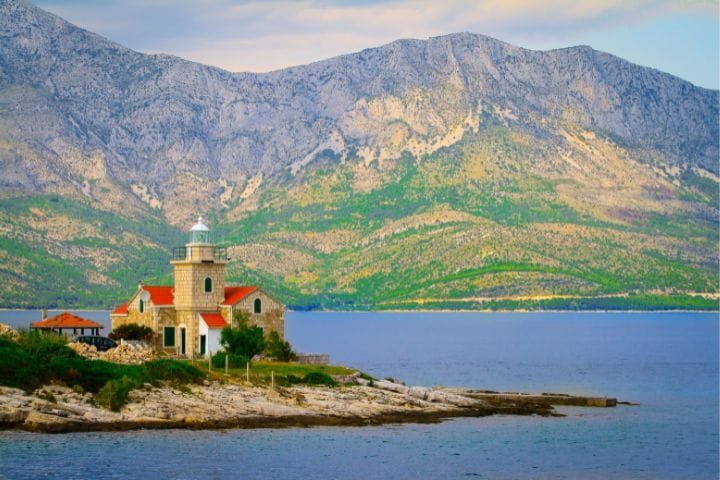
Picture this: you’re driving along Europe’s most spectacular coastal highway with crystal-clear Adriatic waters stretching endlessly to your right, dramatic limestone mountains rising to your left, and charming medieval towns perched on hillsides ahead – welcome to the Dalmatian Coast, where every curve reveals another postcard-perfect vista.
After countless journeys along Croatia’s magnificent coastline over the past decade, I can tell you that driving the Dalmatian Coast ranks among Europe’s most rewarding road trip experiences, combining stunning natural beauty with rich cultural heritage and that intoxicating Mediterranean atmosphere.
The famous Magistrala highway winds for over 600 kilometers along Croatia’s Adriatic shore, connecting historic cities like Split and Dubrovnik while providing access to over 1,000 islands, traditional fishing villages, and national parks.
Whether you’re seeking adventure on pristine islands, cultural immersion in UNESCO World Heritage cities, relaxation on Europe’s most beautiful beaches, or simply the pure joy of scenic driving through landscapes that seem almost too perfect to be real, the Dalmatian Coast road trip delivers experiences that satisfy every traveler.
Let me share insights from years of exploration – which routes provide the most spectacular scenery, how to balance famous destinations with hidden gems, and how to plan the perfect coastal road trip!
The Magistrala Highway: Croatia’s Scenic Coastal Route

Route overview from Rijeka to Dubrovnik covers Croatia’s entire Adriatic coastline, though most travelers focus on the section from Split southward, where the scenery becomes increasingly dramatic. The highway hugs the coastline for most of its length, providing constant sea views punctuated by traditional stone villages and historic towns.
My first drive along the complete Magistrala took three days with overnight stops, but I quickly learned that rushing defeats the purpose. The real magic happens when you allow time for spontaneous stops at viewpoints, hidden beaches, and traditional konobas that aren’t marked on any map.
Best sections for scenic driving include the stretch between Makarska and Gradac, where mountains plunge directly into the sea, and the approach to Dubrovnik through the Pelješac Peninsula. The Biokovo mountain backdrop creates constantly changing light conditions that make every kilometer photogenic.
I particularly love the section around Primošten, where the road winds through vineyards planted on terraced hillsides that tumble down to pristine coves. Early morning drives here, when mist rises from the sea, create almost mystical conditions.
Road conditions vary from excellent modern highway to narrow sections that require careful driving, especially during summer when traffic increases significantly. The newer sections bypass most towns, while older coastal routes provide more intimate experiences with frequent opportunities for stops.
Seasonal timing dramatically affects both scenery and traffic. Spring (April-May) offers wildflower displays and comfortable temperatures, summer provides the warmest weather but brings crowds, while autumn delivers spectacular light and fewer tourists.
Fuel stations and rest stops are well-distributed along major routes, though some rural detours may have limited services. I always keep the tank above half-full when exploring mountain roads or remote coastal areas.
Magistrala Highway essentials:
- Split to Dubrovnik section offers the most dramatic coastal scenery
- Early morning and late afternoon provide optimal lighting for photography
- Allow flexible timing for spontaneous stops and discoveries
- Spring and autumn offer the best balance of manageable crowds and weather
- Fuel planning is essential for mountain detours and remote coastal exploration
🧭 Plan Your Dalmatian Coast Adventure
This coastline is stunning — but logistics matter. These guides help you stay ahead of tolls, borders, and planning mistakes.
- How to Plan a Balkan Road Trip in 2025: Routes, Tips & Must-See Stops — Everything you should know before hitting the coast.
- Balkan Toll Roads Guide 2025 — Croatia uses motorway toll booths — here’s what to expect.
- Essential Balkan Driving Safety Tips 2025 — Sharp bends + cliff edges: drive safely.
Split Region: Ancient Palace and Island Gateway

Diocletian’s Palace creates a unique living history where 3,000 people live within Roman walls built for an emperor’s retirement. This isn’t a preserved museum – it’s a vibrant neighborhood where ancient stones house contemporary life, creating experiences impossible to replicate anywhere else.
I spent an entire morning getting lost in the Palace’s narrow passages, discovering how each historical period adapted existing structures. Medieval churches occupy Roman temples, Renaissance palaces rise from ancient foundations, and modern cafés operate within imperial walls.
Split’s beaches and vibrant local culture extend beyond the historic center to include Bačvice Beach, famous for its shallow waters and picigin (traditional ball game), plus the Marjan Hill peninsula offering hiking trails and panoramic city views.
The daily fish market on the Palace’s eastern side demonstrates Split’s continuing maritime connections, while the evening promenade called “špica” showcases social customs that define Dalmatian coastal culture.
Island day trips from Split provide easy access to some of Croatia’s most beautiful destinations. Hvar offers lavender fields and sophisticated nightlife, Brač features the famous Zlatni Rat beach, while Vis provides pristine nature and fascinating military history.
My favorite island discovery was a tiny family restaurant on Vis where the owner caught our lunch that morning and his wife prepared it using vegetables from their garden. These authentic encounters happen when you venture beyond standard tourist routes.
Trogir’s medieval charm, just 30 minutes from Split, provides another UNESCO World Heritage experience in a more intimate setting. The town occupies a small island connected by bridges, creating a perfectly preserved medieval environment.
Traditional Dalmatian specialties reach high levels in Split’s restaurants, featuring fresh Adriatic seafood, locally-produced olive oil, and regional wines. Dishes like pašticada (beef stew) and black risotto showcase culinary traditions dating back centuries.
Split region highlights:
- Diocletian’s Palace living history within functioning Roman walls
- Easy ferry access to multiple islands with distinct personalities
- Trogir’s intimate medieval UNESCO World Heritage atmosphere
- Traditional Dalmatian cuisine featuring fresh seafood and local ingredients
- Marjan Hill hiking providing panoramic views of the city and islands
Plan Your Trip with Our Favorite Booking Tools
Central Dalmatia: Makarska Riviera and Biokovo Mountains

Makarska Riviera beach towns stretch along Croatia’s most celebrated coastline, where long pebble beaches meet crystal-clear waters beneath the dramatic Biokovo mountain range. This 60-kilometer stretch includes resort towns that maintain authentic Croatian character despite tourism development.
Makarska town serves as the Riviera’s heart, with a palm-lined promenade and traditional stone architecture creating a perfect Adriatic atmosphere. The town’s position beneath Biokovo’s peaks creates spectacular sunset backdrops.
Biokovo Nature Park provides dramatic contrast to coastal experiences with hiking trails leading to viewpoints 1,762 meters above sea level. The recently opened Skywalk extends from the mountain’s edge, offering heart-stopping views of islands and coastline.
I’ll never forget my first sunrise hike to Biokovo’s summit – the pre-dawn darkness gave way to spectacular views of the entire Dalmatian archipelago stretching toward Italy. The effort required makes the views even more rewarding.
Traditional villages in Biokovo’s foothills preserve rural Croatian life where traditional crafts, agriculture, and customs continue largely unchanged. These communities offer authentic cultural experiences and spectacular mountain scenery.
Coastal hiking trails connect many Riviera towns through pine forests and along clifftops, providing access to hidden beaches and viewpoints that showcase the region’s natural beauty from pedestrian perspectives.
Photography opportunities abound throughout the Riviera, from dramatic mountain-to-sea contrasts to traditional stone architecture and pristine beach scenes. Golden hour lighting transforms ordinary scenes into spectacular images.
The combination of mountains plunging directly into clear blue sea creates lighting conditions that change throughout the day, making every photograph unique even from identical viewpoints.
Central Dalmatia experiences:
- Makarska Riviera combining beautiful beaches with dramatic mountain backdrops
- Biokovo Nature Park providing panoramic viewpoints and hiking adventures
- Traditional mountain villages preserving authentic rural Croatian culture
- Coastal hiking trails connecting towns through pristine natural areas
- Spectacular photography opportunities with constantly changing light conditions
Dubrovnik Region: Medieval Splendor and Southern Islands

Dubrovnik Old Town walls provide the essential Croatian coastal experience with a 2-kilometer circuit offering spectacular views of red-tiled roofs, baroque churches, and crystalline Adriatic waters. Early morning walks (8 AM opening) provide optimal conditions before crowds and heat arrive.
Walking these walls feels like traveling through time – every viewpoint reveals architectural details that tell stories of Dubrovnik’s golden age as an independent maritime republic that competed with Venice for Mediterranean trade dominance.
Pelješac Peninsula wine regions produce Croatia’s most acclaimed red wines, particularly Plavac Mali varieties that thrive in the Mediterranean climate and limestone soils. The peninsula’s dramatic mountain spine creates multiple microclimates perfect for viticulture.
I discovered my favorite Croatian winery, Saints Hills, purely by following road signs while exploring Pelješac. Their tasting room overlooks vineyards that extend to the sea, and their Plavac Mali rivals any Mediterranean red wine.
Ston’s medieval walls and salt production create fascinating combinations of military history and culinary tradition. These 14th-century fortifications, Europe’s second-longest after China’s Great Wall, protected valuable salt works that continue operating today.
Korčula Island’s medieval towns preserve authentic Dalmatian architecture and traditional wine culture in settings that feel like open-air museums. The island’s dense forests and traditional vineyards create landscapes that have remained unchanged for centuries.
Mljet National Park offers pristine nature experiences with saltwater lakes, ancient monasteries, and hiking trails through Mediterranean forests. This peaceful island provides a perfect contrast to Dubrovnik’s intensity.
Game of Thrones filming locations throughout the region transformed Dubrovnik into a global phenomenon while somehow maintaining its authentic historical character. The series introduced millions to Croatian beauty while creating new tourism challenges.
Dubrovnik region highlights:
- City walls providing panoramic views and medieval architecture experiences
- Pelješac Peninsula wine regions producing Croatia’s finest red wines
- Ston’s medieval fortifications protecting continuing salt production traditions
- Korčula Island’s preserved medieval towns and traditional wine culture
- Mljet National Park offering pristine nature and peaceful island experiences
Hidden Coastal Gems and Secret Stops

Primošten’s traditional architecture creates one of Croatia’s most photographed scenes, where a medieval church sits on a small island connected to the mainland by a causeway. The surrounding vineyards planted on stone terraces create dramatic landscapes that seem almost too perfect to be real.
My discovery of Primošten happened during a traffic detour that turned into a three-hour exploration. The town’s position on its rocky peninsula, surrounded by vineyards that tumble down to hidden coves, creates scenery that appears on countless Croatian tourism promotions.
Šibenik’s Renaissance cathedral represents one of Croatia’s most important architectural achievements, while the town’s historic center maintains an authentic Dalmatian character without overwhelming tourist development. The fortress complexes provide spectacular views over the historic core and Adriatic waters.
Omiš dramatic canyon setting, where the Cetina River cuts through limestone mountains, creates spectacular scenery and adventure activity opportunities. The town’s position at the canyon mouth provides access to both mountain adventures and coastal experiences.
River rafting through Omiš canyon ranks among my favorite Croatian adventure experiences – the combination of pristine river environments, dramatic cliff scenery, and traditional villages creates unforgettable day trips from coastal bases.
Traditional fishing villages like Postira on Brač Island or Komža on Vis maintain an authentic maritime culture where fishing boats still work from stone harbors and family restaurants serve the daily catch in settings that have remained essentially unchanged for generations.
Local festivals throughout the region celebrate everything from traditional music and dance to seasonal foods and religious traditions. These events provide authentic cultural experiences and opportunities to interact with local communities.
Hidden gem discoveries:
- Primošten’s dramatic peninsula setting with terraced vineyards
- Šibenik’s Renaissance architecture and fortress complex views
- Omiš canyon adventures combining river activities with coastal access
- Traditional fishing villages maintaining an authentic maritime culture
- Local festivals providing genuine cultural immersion opportunities
🌍 More Coast & Culture: Extend Your Trip
Continue your adventure beyond Croatia — these routes connect seamlessly with the Dalmatian Coast.
- 10-Day Croatia Road Trip Itinerary 2025: Zagreb to Dubrovnik — Perfect pairing with the coast.
- 7-Day Montenegro Road Trip Itinerary 2025 — Just across the border from Dubrovnik.
- 14-Day Balkan Road Trip Itinerary 2025 — Multi-country loop including coastal highlights.
Island Hopping by Ferry: Extending Your Coastal Adventure

Ferry system navigation connects the mainland to over 50 inhabited islands, creating opportunities for diverse experiences from sophisticated resort islands to pristine nature preserves. Understanding ferry schedules and booking procedures enhances island exploration significantly.
Hvar’s lavender fields and sophisticated nightlife create unique combinations of natural beauty and contemporary sophistication. The island produces some of Europe’s finest lavender while maintaining traditional agricultural landscapes and offering world-class dining and entertainment.
My most memorable Hvar experience involved hiking through lavender fields at sunrise, then spending the evening at a rooftop restaurant watching sunset over the Pakleni Islands while dining on locally-caught fish paired with island-grown wine.
Korčula’s medieval walls and wine culture preserve authentic Dalmatian traditions in one of the Adriatic’s most beautiful settings. The island’s dense oak forests historically provided shipbuilding materials, while its vineyards produce distinctive white wines using indigenous grape varieties.
Vis Island’s pristine nature results from decades of military restriction that preserved landscapes and traditional culture now being discovered by adventurous travelers. The famous Blue Cave on nearby Biševo creates otherworldly experiences accessible by small boat excursions.
Brač Island’s Zlatni Rat beach changes shape with wind and tide, creating Croatia’s most famous beach experience. The island’s traditional stone masonry provides building materials for structures worldwide, including the White House in Washington, D.C.
Island-hopping strategies should account for ferry schedules, seasonal service variations, and advance booking requirements during peak summer periods. Multi-island itineraries require careful timing but provide incredible diversity of experiences.
Island ferry adventure highlights:
- Ferry network providing access to diverse island experiences and cultures
- Hvar combining lavender agriculture with sophisticated resort amenities
- Korčula’s preserved medieval architecture and traditional wine production
- Vis Island’s pristine nature and Blue Cave excursion opportunities
- Brač Island’s famous beach and traditional stone masonry heritage
Practical Dalmatian Coast Road Trip Planning

Best time to visit depends on priorities – summer offers warmest weather and all services operating, but brings crowds and premium pricing. Shoulder seasons (May-June, September-October) provide an ideal balance of comfortable weather, reasonable prices, and manageable crowds.
Accommodation strategies should account for dramatic seasonal price variations and availability challenges during peak periods. Coastal properties can cost 50-100% more in July-August compared to spring and autumn rates.
I learned to book summer accommodations 3-4 months in advance after being shut out of preferred properties during my second Croatian trip. Popular coastal towns have limited accommodation that fills quickly during peak season.
Driving requirements include international driving permits for most visitors, comprehensive insurance coverage, and understanding of Croatian traffic regulations. Roads are generally excellent, but coastal routes can be narrow and winding.
Vehicle recommendations favor smaller cars for navigating narrow medieval town centers and finding parking in popular destinations. Larger vehicles provide comfort for long drives but create challenges in historic areas and popular beach towns.
Budget planning should account for significant seasonal variations in accommodation, dining, and activity costs. Daily budgets can range from €60-80 in shoulder seasons to €120-200 during peak summer periods.
Ferry costs for island visits, toll roads, and fuel expenses add to base accommodation and dining costs. National park entries and activity fees contribute to additional expenses that can accumulate quickly.
Cultural etiquette basics include dressing appropriately for church visits, greeting people politely, and showing respect for local customs and traditions. Learning basic Croatian phrases enhances interactions and demonstrates cultural respect.
Planning essentials:
- Shoulder season timing providing optimal weather and value balance
- Advance accommodation booking is essential for summer coastal travel
- International driving permits and comprehensive vehicle insurance are required
- Smaller cars are recommended for historic town navigation and parking
- Flexible budgeting accounting for significant seasonal cost variations
Plan Your Trip with Our Favorite Booking Tools
Food and Wine Experiences Along the Coast
Traditional Dalmatian cuisine showcases fresh Adriatic seafood, locally-produced olive oil, and Mediterranean herbs that create distinctive flavors reflecting the region’s position between Italian and Balkan culinary influences. Dishes like pašticada, black risotto, and grilled fish represent authentic regional specialties.
Coastal wine regions produce exceptional varieties using indigenous Croatian grapes like Plavac Mali, Crljenak Kaštelanski (Zinfandel), and Pošip that thrive in a Mediterranean climate and limestone soils. These wines pair perfectly with local seafood and represent Croatia’s emerging wine culture.
My wine education in Croatia began at a tiny family winery on Korčula where the owner explained how traditional grape varieties adapted to island conditions over centuries. Tasting wines made from grapes I’d never heard of opened my appreciation for Croatian viticulture.
Fresh seafood markets in towns like Split, Dubrovnik, and smaller fishing villages demonstrate continuing maritime traditions while providing access to daily catches prepared using traditional methods. Market visits provide cultural experiences and ingredients for picnic meals.
Authentic konoba dining in family-run taverns serves traditional recipes using locally-sourced ingredients, often in settings that haven’t changed for generations. These establishments provide genuine cultural experiences alongside exceptional cuisine.
Olive oil production throughout Dalmatia creates some of Europe’s finest extra virgin oils using traditional methods and indigenous olive varieties. Tasting experiences and mill visits provide education about this essential Mediterranean ingredient.
Local food festivals celebrate regional specialties like Ston oysters, Vis wine, or Pag cheese, providing opportunities to taste exceptional products while experiencing authentic community celebrations.
Culinary experience highlights:
- Traditional Dalmatian cuisine featuring fresh seafood and Mediterranean ingredients
- Indigenous wine varieties showcasing Croatia’s emerging viticulture excellence
- Fresh seafood markets demonstrating continuing maritime traditions
- Authentic konoba dining in family-run establishments with traditional recipes
- Olive oil tastings and mill visits exploring essential Mediterranean production
Your Dalmatian Coast Adventure Awaits
The Dalmatian Coast road trip offers an unparalleled combination of natural beauty, cultural heritage, and Mediterranean charm that creates driving experiences ranking among Europe’s finest coastal adventures. From crystal-clear Adriatic waters to medieval cities, pristine islands to traditional villages, every mile reveals new wonders that justify Croatia’s reputation as one of the world’s most spectacular coastal destinations. The magic lies not just in famous highlights, but in spontaneous discoveries and authentic encounters that occur when you explore this magnificent coastline at your own pace.
Plan thoughtfully, drive safely, and prepare for coastal adventures that showcase why Croatia’s Dalmatian Coast continues to captivate travelers while maintaining the authentic character that makes each journey feel like a personal discovery!
FAQs on Dalmatian Coast Road Trip
What is the best time to do a Dalmatian Coast road trip?
The ideal time is late spring (May–June) or early fall (September–October) when the weather is pleasant, and popular spots are less crowded.
How long does a typical Dalmatian Coast road trip take?
Most travelers spend between 5 to 10 days exploring the coast, depending on how many towns and islands they want to visit.
Do I need a rental car to explore the Dalmatian Coast?
While you can use buses and ferries, having a rental car offers more flexibility to visit remote beaches and smaller towns at your own pace.
Are there ferry connections to islands from the Dalmatian Coast?
Yes, several ferries connect coastal towns to islands like Hvar, Brač, Korčula, and Vis, which are popular stops on the road trip.
Is driving easy along the Dalmatian Coast?
The coastal roads are generally well-maintained, but some routes can be narrow and winding, so cautious driving is recommended.
What are must-see stops on a Dalmatian Coast road trip?
Key highlights include Split, Trogir, Šibenik, Zadar, Makarska Riviera, and Dubrovnik, along with nearby islands.
Can I drive from the Dalmatian Coast to other Balkan countries?
Yes, it’s possible, but you should check border crossing requirements and rental car company policies before traveling internationally.
🌄 Epic Viewpoints Along (and Above!) the Adriatic
If you love cliffside viewpoints and dreamy sunsets — don’t miss these:
💬 We’d love to hear from you!
Have questions, tips, or personal travel stories to share? Drop them in the comments below — your insights help fellow travelers plan their adventures too.
